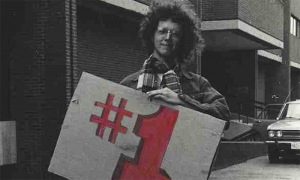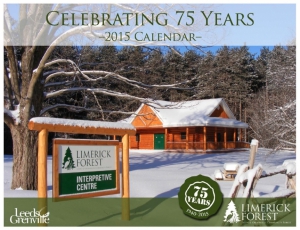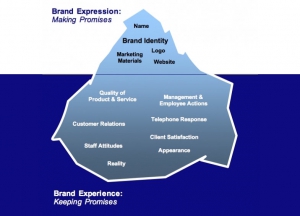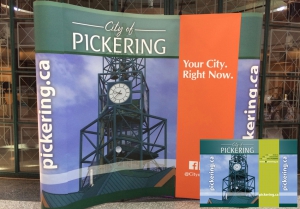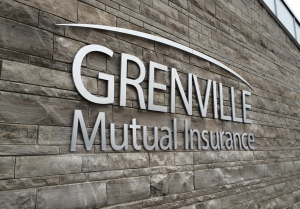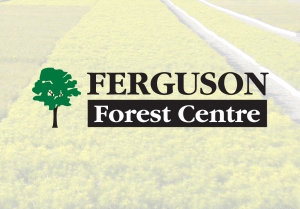Tom Graham
Being Prepared
Our experience working with many municipalities has made us realize they often face a similar challenge: ‘How do we attract new investment, while retaining our existing businesses?’ The answer: a good marketing plan.
An Economic Development Marketing Plan involves three components:
- An assessment of your community’s marketing preparedness
- The development of marketing tools, tactics and timing
- Evaluation and refinement
Marketing preparedness is when you compare your current marketing efforts with where you want to be, and confirm the target audiences identified in your economic development strategy. It’s also a chance to assess whether your community’s brand reflects your new future direction – or whether it needs to be enhanced or refined.
With your marketing preparedness assessment complete, strategies can be developed, tailored to each specific audience. The strategies will outline the ‘tools, tactics and timing’ necessary to reach your marketing goals. They’ll include identifying the right tools and knowing how and when to use them. Of course, tools will include tangible materials and well as media strategies, events and face-to-face selling. Ongoing evaluation and refinement on a regular basis keeps the plan dynamic and fresh.
The finished plan ought to be a fairly dynamic ‘road map’, identifying what makes your community a unique place to live, work, play and invest in. It serves to guide the actions of staff and allows for measured results. An effective marketing plan is key to directing the effort that will help attract the right investment to your community.
UNFILED – A story of boxes, notes and sketches from a design thinker’s archives
Back in the day, as a young art student at York University, I was frequently challenged by new ideas from leading thinkers of the day such as Marshall McLuhan, Alvin Toffler, and Lucy Lippard.
I started to accumulate articles, files, magazine clippings, drawings, notes, and photographs. And slides. (Apparently, many people under 30 today do not know what 35mm slide are. Hhmm.)
I became fascinated with documenting, archiving and organizing material that could be retrieved for later use. I studied the filing of things, and filled my notebooks with ideas on how/why to file stuff properly.
I set up an early form of information architecture – how to structure and file information so it is most easily retrieved and put to use.
I was an information junkie – about 20 years before they invented the Internet.
So, then I became intrigued with the idea of a time capsule, so that information of today could be packaged so that future generations/audiences could get a glimpse of what things were like back in the day.
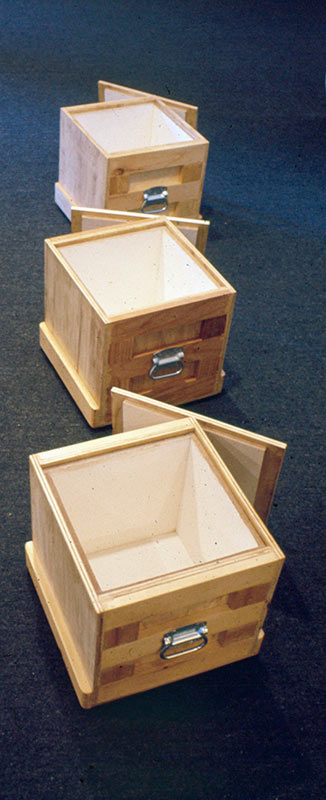 During the threshold moment of finishing university, I came up with the idea of doing a one-man show called simply ‘FILE’ – featuring none other than my filing system, along with a cross-section of my personal files, and copies of selected notes, illustrations, photographs, receipts, etc., mounted and on display on the gallery walls. I designed and built three archival storage boxes (aka crates or caskets). The FILE caskets were part of the show.
During the threshold moment of finishing university, I came up with the idea of doing a one-man show called simply ‘FILE’ – featuring none other than my filing system, along with a cross-section of my personal files, and copies of selected notes, illustrations, photographs, receipts, etc., mounted and on display on the gallery walls. I designed and built three archival storage boxes (aka crates or caskets). The FILE caskets were part of the show.
The intent was, that these boxes, or caskets, would be buried at different locations around Ontario, and that at some point in the future, they would be unearthed. I think I had always planned to be around when they were unearthed, or unfiled, sort of like my past self talking to my future self, saying, hey, how did things turn out in the future?
It’s now 2015. It’s been 40 years since that show. I asked myself ‘where are those boxes?’… It’s time to ‘dig them up’.
I knew I had one buried in our basement – not physically ‘buried’, just piled under other storage debris, and I hadn’t looked at it in years. I knew that one of the boxes had gone to a friend of mine at the time (who purchased it for $50). I’d kept in touch with her from time to time, but I had no idea whether she still had it. Turns out, she did – “buried in her basement” – with family photos in it.
The whereabouts of the third FILE box was a mystery until I sent some family history information to my siblings this past Christmas. My brother, James, wrote back, thanking me, and saying that he’d file it in “that box you gave me for my 21st birthday”. Mystery solved.
So, this May, I’m re-mounting the show. This show is about the retrieval and (temporary) reuniting of the three boxes 40 years later. The owners of the other two boxes have kindly agreed to allow their FILE crates to be put on display. In the process, a lot of other stuff from my personal archives has come to light. Drawings, notes, photographs, post cards – many of which have not seen the light of day for the last four decades. I felt it was time to give them some air.
The process has given me the chance to look back at what I was doing at that time: what was so important to me then? Was I doing anything similar then compared to what I’m doing now? Looking back, I can see some of the same themes: documenting and preserving history, story telling, organizing information, the importance of good design, building relationships and creating community.
How does looking at the past, prepare us (make us resilient) for the future?
Winston Churchill once said, “A nation that forgets its past has no future.”
The FILE boxes are a metaphor for the desire to preserve the past. Keeping the story alive.
UNFILED: A retrospective art show by Tom Graham.
Boxes, notes and sketches from a design thinker’s archive.
May 1st, 4 – 8pm
May 2nd, 11am – 5pm
May 3rd, 12noon – 4pm
Opening reception:
Friday, May 1st, 2015
4 – 8pm
The Wellstein Gallery
113 Prescott Street
Kemptville, ON
Forest Therapy – People Need Nature
Recently, we were asked to design a calendar to celebrate the 75th anniversary of Limerick Forest – a 5782-hectare community forest located in eastern Ontario, owned and managed by the United Counties of Leeds and Grenville. Originally formed by reforesting abandoned farmland in the 1940s, it now encompasses wetlands and second growth mixed forest. Trails and pathways crisscross the forest.
(Here’s Limerick’s website: www.LimerickForest.ca)
What makes the calendar so awesome (apart from the great design!), is the amazing collection of photos taken by County Forester Geoff McVey. Using his stunning photos, the story of Limerick Forest is really brought to life – hoping to inspire viewers to go outside and play!
Anyone who has taken a walk in the woods, or gone for a cross-country ski through a pine forest knows how good it feels. Well, it turns out it’s not just the fresh air and exercise that’s good for you. What you’re feeling is a dose of Forest Therapy.
Forest Therapy is a concept that started in Japan. The Japanese word for it is Shinrin-yoku, meaning "taking in the forest atmosphere" or “forest bathing”. Developed during the 1980s, it has become a mainstay of preventive health care and healing in Japanese medicine. Researchers have produced tonnes of literature on the health benefits of spending time under the canopy of a living forest.
The idea is simple: a walk in the woods leads to being more relaxed, which produces rejuvenating and restorative benefits. (There’s also something mind-altering about breathing pine-scented air…who knew?)
People need nature. Our food, our water, our livelihoods, our well-being — they all come from nature. Conservation International has just launched a powerful new series of videos with the theme Nature us Speaking.
We need to be listening.
Check it out. www.NatureIsSpeaking.org
Your Brand is an Iceberg
Municipal leaders and economic development professionals recognize the importance of having an effective brand for their community. They also recognize that branding is more than having an attractive visual identifier or logo.
An interesting way of looking at branding is as if it was an iceberg. The part you see – the 10% – is the logo, the marketing materials, the website, etc. This is where promises are made, and where the community usually makes its first impression. It could be referred to as its ‘Brand Expression’.
But the 90% under the water is even more significant. How the community deals with its stakeholders; how it responds to requests; the programs and incentives it offers. What kind of experience do residents and visitors – and investors – have when they deal with the municipality? We can call this the ‘Brand Experience’.
Ideally, the top and bottom match! A brand is not sustainable if there are gaps between promise and performance.
The welcoming messages in the literature should reflect a welcoming community in reality. The promises made in the promotional campaign will come to life when a visitor experiences the community for the first time. The claims of a catchy tagline are supported by testimonials from real people.
Municipal branding is a dynamic, 360-degree, multi-level, corporation-wide, holistic marketing process that starts from within, and spreads outward to the target audience.
The brand should reflect the marketing plan. Done well it serves to attract interest, build trust, provide solid value and generate lasting relationships.
Clear Cut Installations
Clear Cut Installations is one of eastern Ontario’s top renovators for windows, kitchens, bathrooms and roofing. TD Graham + Associates has worked with Clear Cut for many years, designing brand and marketing materials for use by their sales team and company owner, Steve Caza. Recently, with the help of our technical partner, Probase Web, we’ve just redesigned the company website. Visit www.clearcutinstallations.com
City of Pickering
The City of Pickering is strategically located as the eastern gateway to the Greater Toronto Area. Facing the challenges of a growing city, TD Graham + Associates was engaged to develop a series of brand initiatives, including a brand alignment guide, plus marketing materials for their City Centre, newsletters and Economic Development collateral.
“Under the guidance of TD Graham + Associates, the City has now implemented a cohesive set of brand guidelines, aligning all departments and all materials with the City of Pickering corporate brand. The Corporate Brand Guidelines are clear, easy to implement and allow each department a degree of creative input while still protecting the corporate brand image.”
Catherine Hodge, Senior Coordinator, Business Development & Marketing, City of Pickering
Kemptville Live
The Kemptville Live Music Festival is the brainchild of local entrepreneur Bob Beshara, or Class Axe Guitars – the Ottawa Valley’s Ultimate Guitar Shop (ClassAxe.ca). The festival attracts thousands every year to hear the likes of Gordon Lightfoot, Bruce Cockburn, Tom Cochrane and more.
Working closely with our web partners, Probase Web, TD Graham + Associates developed a brand and promotional materials including a website with online ordering, signage and print ads. Kemptville Live is positioned as the premier music festival in the community.
Jansen Law
Jansen Law is Kemptville’s most experienced law firm (est. 1963). With the retirement of Ted Warren from the practice, and the arrival of lawyer Rachel Jansen to join her father Paul Jansen, the firm needed a new brand to go with its new name. TD Graham + Associates developed a brand that brought a fresh new look across all media: stationery, advertising, signage and a new website.
Grenville Mutual Insurance Company
Grenville Mutual insurance celebrates 125 years in business in 2017. As part of the 125h celebrations, a new look for the company was developed, designed by TD Graham + Associates. The new logo emphasizes the company name in a modern legible font, and is starting to appear on company communications. Watch for more info in 2017. The new signs were fabricated and installed by local firm Classic Graphics.
Ferguson Forest Centre
Currently the Ferguson Forest Centre runs the only significant native plant nursery operation in Eastern Ontario, selling close to two million tree seedlings each year. The Forest Centre includes trails and recreational opportunities, supported by its business side, the Ferguson Tree Nursery. Marketing support has included the ongoing development the brand, collateral material, displays and extensive signage. New websites have been developed with the help of our strategic partner, Probase Web, making online ordering of product faster and easier.
“Tom and Linda have been great to work with. From our marketing plan and signage, to our website and new trailer graphics – TD Graham has consistently led us in improving our marketing message.”
Ed Patchell, Chief Operating Officer
Ferguson Forest Centre


